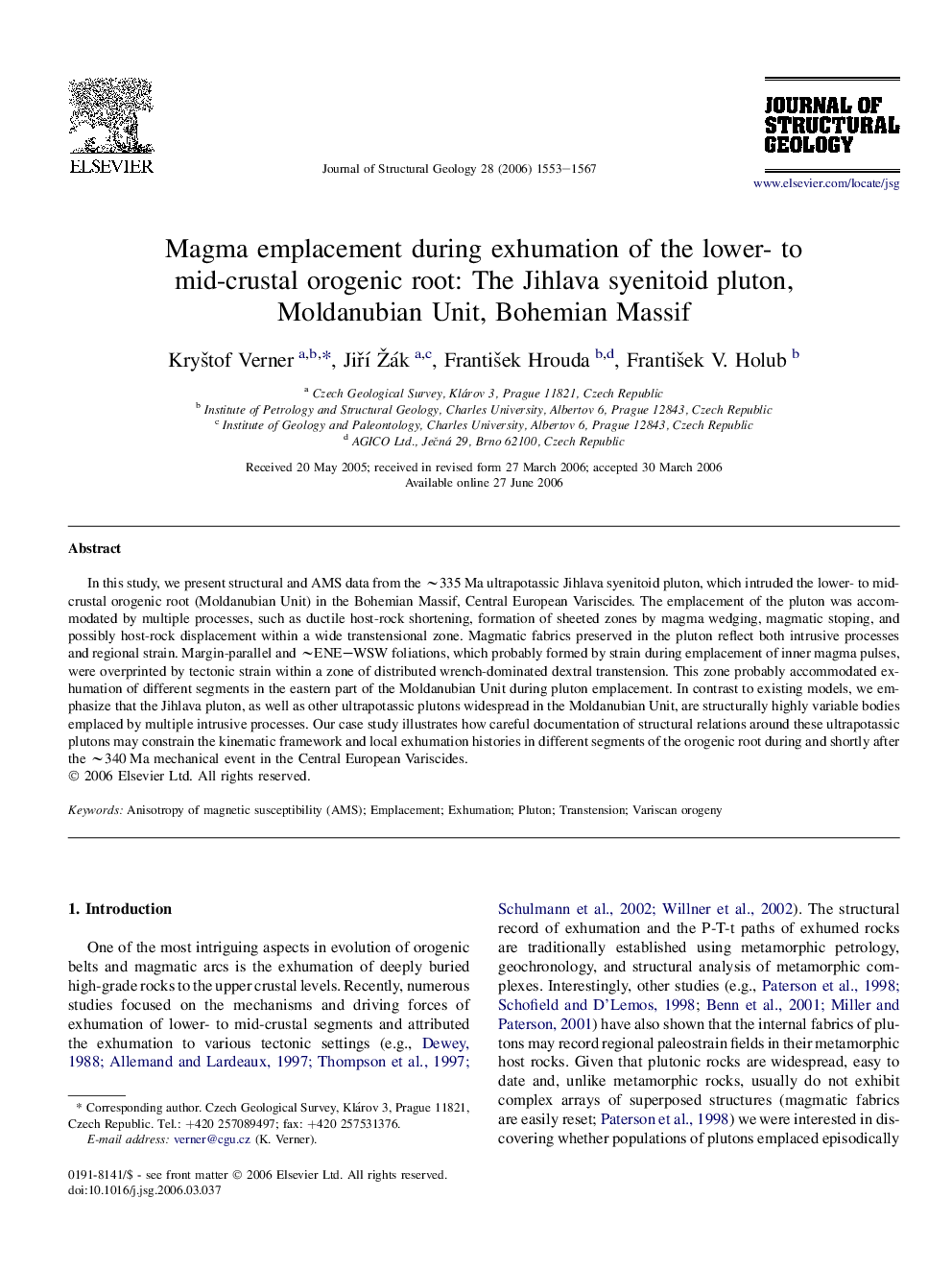| Article ID | Journal | Published Year | Pages | File Type |
|---|---|---|---|---|
| 4734068 | Journal of Structural Geology | 2006 | 15 Pages |
In this study, we present structural and AMS data from the ∼335 Ma ultrapotassic Jihlava syenitoid pluton, which intruded the lower- to mid-crustal orogenic root (Moldanubian Unit) in the Bohemian Massif, Central European Variscides. The emplacement of the pluton was accommodated by multiple processes, such as ductile host-rock shortening, formation of sheeted zones by magma wedging, magmatic stoping, and possibly host-rock displacement within a wide transtensional zone. Magmatic fabrics preserved in the pluton reflect both intrusive processes and regional strain. Margin-parallel and ∼ENE–WSW foliations, which probably formed by strain during emplacement of inner magma pulses, were overprinted by tectonic strain within a zone of distributed wrench-dominated dextral transtension. This zone probably accommodated exhumation of different segments in the eastern part of the Moldanubian Unit during pluton emplacement. In contrast to existing models, we emphasize that the Jihlava pluton, as well as other ultrapotassic plutons widespread in the Moldanubian Unit, are structurally highly variable bodies emplaced by multiple intrusive processes. Our case study illustrates how careful documentation of structural relations around these ultrapotassic plutons may constrain the kinematic framework and local exhumation histories in different segments of the orogenic root during and shortly after the ∼340 Ma mechanical event in the Central European Variscides.
